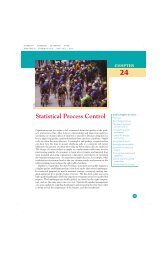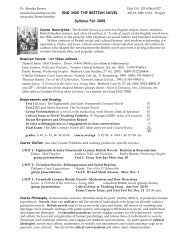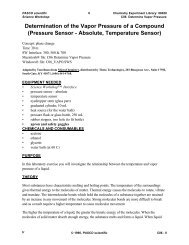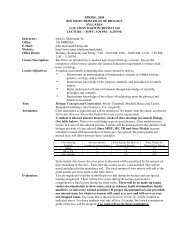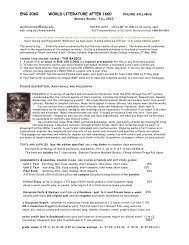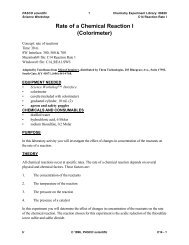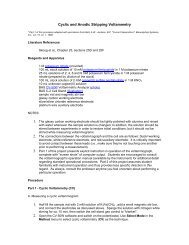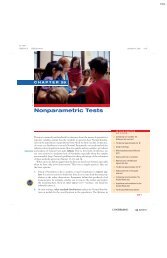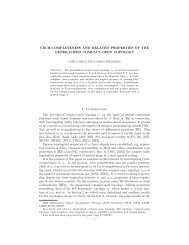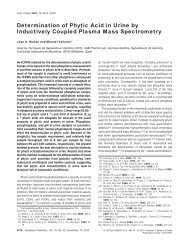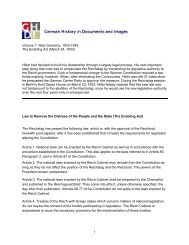CHAPTER 27 ⢠Statistical Process Control
CHAPTER 27 ⢠Statistical Process Control
CHAPTER 27 ⢠Statistical Process Control
You also want an ePaper? Increase the reach of your titles
YUMPU automatically turns print PDFs into web optimized ePapers that Google loves.
<strong>27</strong>-32 <strong>CHAPTER</strong> <strong>27</strong> • <strong>Statistical</strong> <strong>Process</strong> <strong>Control</strong><br />
gives x and s for the first 21 samples, coded in units of 0.0001 inch from the center<br />
of the specifications. The specifications allow a range of 0.0002 inch about the<br />
center (a range of 2 to 2 as coded).<br />
(a) Make an s chart based on past data and comment on control of short-term<br />
process variation.<br />
(b) Because the data are coded about the center of the specs, we have a given<br />
target 0 (as coded) for the process mean. Make an x chart and comment<br />
on control of long-term process variation. What special x-type cause probably<br />
explains the lack of control of x? CUTTING<br />
<strong>27</strong>.24 The Boston Marathon. The Boston Marathon has been run each year since<br />
1897. Winning times were highly variable in the early years, but control improved<br />
as the best runners became more professional. A clear downward trend continued<br />
until the 1980s. Rick plans to make a control chart for the winning times from<br />
1950 to the present. The first few times are 153, 148, 152, 139, 141, and 138 minutes.<br />
Calculation from the winning times from 1950 to 2011 gives<br />
x 134.032 minutes and s 6.462 minutes<br />
Rick draws a center line at x and control limits at x 3s for a plot of individual<br />
winning times. Explain carefully why these control limits are too wide to effectively<br />
signal unusually fast or slow times.<br />
COMMENTS ON STATISTICAL CONTROL<br />
Having seen how x and s (or x and R) charts work, we can turn to some important<br />
comments and cautions about statistical control in practice.<br />
Focus on the process rather than on the products. This is a fundamental<br />
idea in statistical process control. We might attempt to attain high quality by careful<br />
inspection of the finished product, measuring every completed forging and reviewing<br />
every outgoing invoice and expense account payment. Inspection of finished<br />
products can ensure good quality, but it is expensive. Perhaps more important, final<br />
inspection comes too late: when something goes wrong early in a process, much bad<br />
product may be produced before final inspection discovers the problem. This adds<br />
to the expense, because the bad product must then be scrapped or reworked.<br />
The small samples that are the basis of control charts are intended to monitor the<br />
process at key points, not to ensure the quality of the particular items in the samples.<br />
If the process is kept in control, we know what to expect in the finished product.<br />
We want to do it right the first time, not inspect and fix finished product.<br />
rational subgroup<br />
Rational subgroups. The interpretation of control charts depends on the distinction<br />
between x-type special causes and s-type special causes. This distinction in<br />
turn depends on how we choose the samples from which we calculate s (or R). We<br />
want the variation within a sample to reflect only the item-to-item chance variation<br />
that (when in control) results from many small common causes. Walter Shewhart,<br />
the founder of statistical process control, used the term rational subgroup to emphasize<br />
that we should think about the process when deciding how to choose samples.



